New products at Crocus
by Sarah - May 6th, 2010.Filed under: Crocus, New Products.
Crocus has these new items today
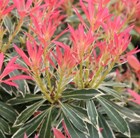
lily-of-the-valley shrub £12.99
Position: full sun or partial shadeSoil: humus-rich, moist, well-drained acid soil or ericaceous compostRate of growth: slow-growingFlowering period: April and MayHardiness: fully hardyA pretty, small, variegated, evergreen shrub with bright red, young leaves which develop silvery-white edges, contrasting beautifully with the older leaves. In mid and late spring, clusters of pretty, white, nodding bell-like flowers, resembling lily-of-the-valley appear. This compact shrub looks wonderful in a shady shrub border with well-drained, acid soil or in a container in a patio or courtyard garden. Garden care: Add composted pine needles or peat when planting. Apply a generous 5-7cm (2-3in) mulch of composted pine needles or peat each year around the base of the plant in early spring. Remove the faded flower heads in late spring along with any frost-damaged foliage.
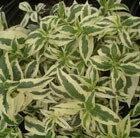
bush honeysuckle £12.99
Position: full sun or partial shadeSoil: fertile, well-drainedRate of growth: averageFlowering period: May to JuneFlower colour: tiny yellow flowersOther features: beautiful foliage colourHardiness: fully hardyRecently developed in the USA, this fascinating introduction is the first variegated form. Its white-edged, green foliage holds its colour well and is perfect for illuminating partially shaded spots, where it will tolerate some drought once it has had a chance to become established. A close relative of Weigela, it forms a densely branched, rounded, deciduous shrub and produces tiny yellow flowers in late spring and early summer.Garden care: Cut back to a low, permanent framework each spring as the buds are beginning to swell, and apply a generous layer of mulch around the base of the plant.

rose Alberic Barbier (rambler) £11.99
Position: full sun or light dappled shadeSoil: fertile, humus-rich, moist, well-drained soilRate of growth: fast-growingFlowering period: June and JulyFlower colour: whiteOther features: excellent cut-flowersHardiness: fully hardySmall, elegant sprays of fully double, slightly scented, creamy-white flowers in June and July and glossy, dark-green leaves. The foliage of this vigorous, rambling rose is virtually evergreen, making it ideal for covering unsightly buildings or walls. It will happily grow in sun or partial shade, often producing a second flush of fragrant blooms.Garden care: Before planting shorten thick roots to 25cm (10in) and reduce top-growth to an outward-facing bud 8-15cm (3-6in) above ground-level. Plant during a frost-free spell, incorporating well-rotted organic matter and a balanced fertiliser into the planting hole. Ensure that the ‘bud union’ (the bulge at the base of the shoots) is 2.5cm (1in) below the soil.All our roses are field grown. In October/November they are dug up and potted. However, they will not produce any new roots until spring, so don’t be surprised if the compost falls away from the roots when winter planting. Some suppliers send out ‘bare root’ plants unpotted, but we don’t as it is easier to manage them on the nursery in pots.
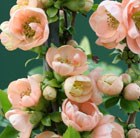
flowering quince £9.99
Position: full sun or partial shadeSoil: moderately fertile, well-drained soilRate of growth: fast-growingFlowering period: March to MayHardiness: fully hardyOrnamental quinces bring a welcome flush of colour to the garden in spring, when their bare twigs are smothered in flowers before the glossy, dark green leaves appear. ‘Geisha Girl’ is later flowering than other varieties and has double, deep apricot-pink flowers from March to May, followed by aromatic, greenish-yellow fruit. This deciduous shrub looks lovely in the middle of a mixed border, or trained as a specimen against a wall. More compact than other varieties, it flowers best in moderately fertile, well-drained soil in full sun. The fruit can be eaten when cooked.Garden care: After flowering, prune side-shoots to five or six leaves and remove crossing stems. Once established, take out excess growth in late spring or summer and cut back all side-shoots to two or three leaves.
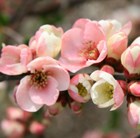
flowering quince £9.99
Position: full sun or partial shadeSoil: moderately fertile, well-drained soilRate of growth: fast-growingFlowering period: March to MayHardiness: fully hardyOrnamental quinces bring a welcome flush of colour to the garden in spring, when their bare twigs are smothered in flowers before the glossy, dark green leaves appear. ‘Moerloosei’ is later flowering than other varieties and has cup-shaped, white flowers flushed pink from March to May, followed by aromatic, greenish-yellow fruit. This vigorous, deciduous quince makes an attractive informal hedge fora sunny or partly shady site with moderately fertile, well-drainedsoil, and looks stunning trained against a wall. The fruit can be eaten when cooked.Garden care: After flowering, prune side-shoots to fiveor six leaves and remove crossing stems. Once established, take out excess growth in late spring or summer and cut back all side-shoots to two or three leaves.
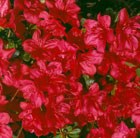
evergreen azalea £9.99
Position: full sun or partial shadeSoil: moist, well-drained, humus-rich, acid soil or ericaceous compostRate of growth: averageFlowering period: MayFlower colour: purpleOther features: looks fabulous planted en masseHardiness: fully hardyMasses of small, funnel shaped, semi-double, bright red flowers in late spring and early summer, and small, dark green leaves. This compact, evergreen azalea is perfect for a shrub border with humus-rich, acid soil. A mass planting provides a fiery and colourful display, unrivalled by any other spring-flowering shrub. Garden care: Avoid planting too deeply. Apply a generous 5-7cm (2-3in) mulch of leaf mould around the base of the plant each spring.
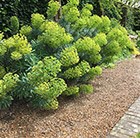
spurge £6.99
Position: full sunSoil: light, well-drained garden soilRate of growth: fast growing Flowering period: March to MayHardiness: fully hardyThis handsome euphorbia has upright stems clothed with whorls of fleshy, glaucous leaves and topped with huge heads of chartreuse-green flowers with bronze ‘eyes’ from March to May. The Edwardian garden designer Gertrude Jekyll described this sun-loving, evergreen shrub as ‘one of the grandest of plants’. Euphorbia characias originates from the Mediterranean, where it is found on dry rocky slopes and scrubland, so it is very tolerant of drought once it becomes established. It forms a natural rounded shape, and brings structure and an architectural quality to the garden. A tall mainstay of the traditional herbaceous border, it’s equally at home in a contemporary minimalist or gravel garden. It may self-seed, but plants rarely come true from seed.Garden care: To promote new shoots remove flower heads in spring after they have flowered. When working with spurges always wear gloves since the milky sap is poisonous and a potential skin irritant. Remove seedlings as they appear.
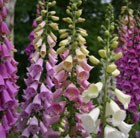
foxglove £4.99
Position:full sun to partial shadeSoil: moist, humus-rich soilRate of growth: average to fast-growing Flowering period: May to July Flower colour: purple, pink, creamy-yellow or whiteHardiness: fully hardyTall spires of large, well-spaced, tubular flowers in soft shades of purple, pin k, creamy-yellow or white, each one with throats spotted maroon or purple appea r from May to July. These pastel-coloured foxgloves are perfect for the back of a large cottage-style border. Although short-lived, given the right conditions they will perpetuate by self-seeding. All parts of the plant may cause severe discomfort if ingested and contact with the foliage may irritate skin.Garden care: Ensure that the soil is kept moist in summer. After flowering cut back the flowered spikes to encourage more sideshoots. Cut down to the ground after flowering. Apply a generous 5-7cm (2-3in) mulch of well-ro tted organic matter around the plant in early spring.These plants are mainly biennial, although they will produce plenty of new sideshoots and self-seed freely.






